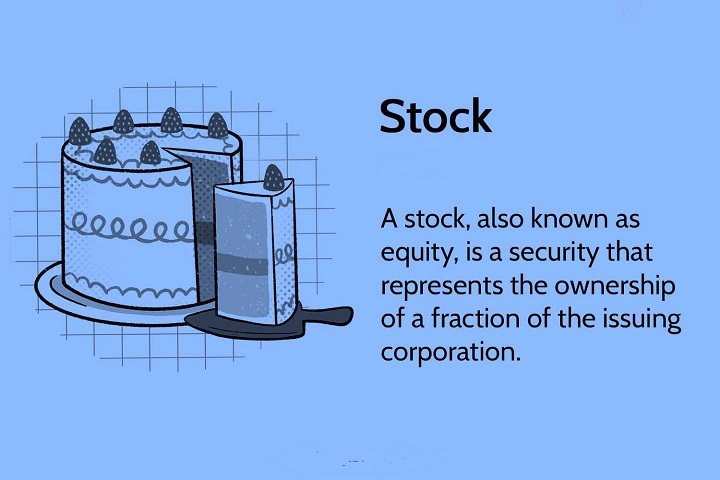Stocks (also capital stock, or sometimes interchangeably, shares) consist of all the shares by which ownership of a corporation or company is divided. A single share of the stock means fractional ownership of the corporation in proportion to the total number of shares.
This article is about the total shares in a business. For individual units of corporate stock, see Share (finance). For “capital stock” as an input to production, see Physical capital. For the goods and materials a business holds, see Inventory.
The stocks are deposited with the depositories in the electronic format also known as Demat account. As new shares are issued by a company, the ownership and rights of existing shareholders are diluted in return for cash to sustain or grow the business.
This would represent a windfall to the employees if the option were exercised when the market price is higher than the promised price, since if they immediately sold the stock they would keep the difference (minus taxes).

A corporation’s stock is divided into shares, the total amount of which is specified at the time the business is formed. The corporation may go on to issue more shares if the current shareholders approve them.
History Of Stocks
Many of the state’s functions were contracted out—that is, leased—to private businesses throughout the Roman Republic. As separate businesses, these government contractors were known as publicani, or societas publicanorum.
“Almost every citizen” took part in the government leases, according to Polybius. Additionally, there is proof that stock prices changed. Cicero, the Roman orator, refers to “shares that had a very high price at that time” when he talks about partes illo tempore carissimae. This suggests that prices and the behavior of the Rome stock market fluctuate.
The Falun Mine was part of Great Copper Mountain (Stora Kopparberget in Swedish), which was owned by the Bishop of Västerås, who bought a 12.5% stake in it in 1288. A stock transfer in 1288, in exchange for an estate, is documented by the Swedish mining and forestry products business Stora.
The Dutch East India Company issued the first shares that could be traded on the Amsterdam Stock Exchange shortly after, in 1602. It sent a million Europeans to labor in Asia and traded 2.5 million tons of merchandise with Asia on 4,785 ships between 1602 and 1796.
Types Of Stocks
Shares of ordinary stock or preferred stock are the usual forms of stock. Common stock usually provides voting rights that can be used to influence corporate decisions as a unit of ownership. Unlike ordinary stock, preferred stock is legally entitled to a specific amount of dividend payments before any dividends can be paid to other shareholders. This is how preferred stock varies from common stock in that it usually does not contain voting rights.
Novel equity offerings may be accompanied by particular legal provisions that set them apart from the issuer’s prior offerings. Certain common stock shares may be issued with special rights exclusive to them and issued to specific parties, or they may be issued with the usual voting rights but nothing else.
They also offer additional dividend accumulation characteristics. Furthermore, preferred stock is typically denoted by a letter at the end of the security. For instance, Class “B” shares of Berkshire-Hathaway are sold under the stock ticker BRK.B, while Class “A” shares of ORION DHC, Inc. are sold under the ticker OODHA until the company decides to drop the “A” and designate its “Common” shares only as OODH. This additional letter informs investors that their shares are taken into consideration for exclusive rights, but it does not imply that such rights actually exist. Instead, these rights or privileges could be altered in response to decisions made by the underlying corporation.
